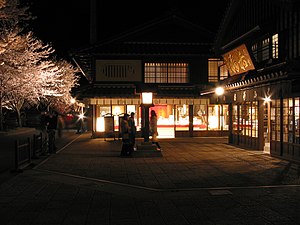

Lighting,
otherwise known as the process of Illumination, is the deliberate use
of light to achieve a certain effect, whether it is practical or
aesthetic. There are two types of light sources; Artificial, meaning
light that is produced by products such as lamps and light fixture and
Natural, meaning light produced by the sun captured through the use of
windows, light shelves and skylights.

Now
lighting has more than just a practical use and that is what the
entertainment and gaming industry take advantage of to make their
products more aesthetically pleasing, create moods and emotions as well
as make things look real or believable.
Lighting
in games
is an extremely important aspect of game design and can make or break
your game in a number of areas, such as visuals, atmosphere and theme.
It is one of the most influential elements in environments and it is
unfortunately forgotten
about or underestimated. In the past it use to be that lighting wasn't
as easy to add into the game because of weak hardware and game engines,
however with the advances in technology there is no longer any excuses.
Lighting has purposes past just allowing players to see where they are
going, it creates atmosphere and can make a scene look dark and
mysterious or bright and happy, this can really help the overall look
and feel of a game.
You
can really notice the difference lightning has on a scene, as seen in
the image above, and the importance of having a light source (which is
actually one of the most basic rules of lighting). Now just having a
light source isn't going to guarantee that the lighting will be fine in
the game, it is also important to have a light source visible in the
scene otherwise it is impossible to tell where the light is coming from.
This can break the illusion and render a scene fake looking and
unrealistic. In the image above image you can see the light source (the
sun) which makes the image more realistic than it would if you couldn't
see the light source.
It
is also important to have your light source in proportion to the other
aspects of the scene, as a tiny single light bulb would never be able
to light up a whole room no matter how bright it is. In addition to
keeping things proportionate you also have to make sure that your
source's brightness is right for your scene. You can't have a really
bright room with a dull light source that just looks awkward and doesn't
make sense. In the above images you can really notice how keeping your
light source proportionate and at the right brightness can improve the
overall look of the scene.
The
above images are gorgeous aren't they? That is because not only is the
lighting in them done well, but also because of the colors in the image
themselves as well. Color is an important aspect in lighting, and as a
rule it is a must and absolute requirement in almost every situation to
have coloured lighting. Almost all of the world's light sources cast
light that has color, so it is not realistic to have white lighting in
the games environment, since if color isn't added the result is very
bland and fake looking. Below you can see how color and coloured
lighting play a huge part in the way a game looks and feels, each
different color palette gives you a different feel and sense, which is
extremely important in how a game relays information to players:
Along
with color it is important to ensure that the aspect of light
temperature is addressed when adding lighting to your games. A common
theory of light states that light is simply energy which is warmer and
more energy it has the stronger the light gets. By paying attention to
the temperature of the colored lights it is easier to add contrast and
dynamic to your scene or game. By doing this the look of the game can
completely change as seen in the image below:
Now
keep in mind that everything I mentioned above isn't the only things
that make up lighting and define its importance, in fact texturing is
another aspect that can make or break the game because textures are the
base for lighting. It is important to note that when textures are either
too dark or too light that can throw off your lighting since dark
textures can't be lit very well while bright textures when lit look too
bright. This goes for the colors in the textures as well, since they can
influence the way the lighting behaves. The below images are perfect
examples of what can happen:
These are just some of the aspects that make up lighting in many of the
games we play and their importance to how the game looks and feels. Now
my challenge to you is the next time you play your games, take a moment
to look at the scene before you and try and see how they approached the
lighting in the game and post your findings in the comments below.
Now if any of you want to learn more about lighting in games here are a few links you can check out:










No comments:
Post a Comment